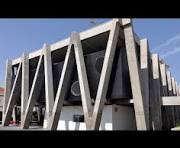Forgot2Yield
Industrial
Hi there,
I've read a few forums on this topic and see that some people create models where chevron braces are not taking any axial load from gravity forces. My question is if there is considerable gravity load acting at the point where your chevron braces are connecting to your beam, (say we are talking about a machine frame where the heavily loaded feet stand directly above your chevron brace) and in reality a lot of this load will be transferred to the brace then what would be your preferred method of design:
1)design the braces for those axial loads resulting in large braces compared to the beam sizes
2)specify in the procedure that the braces be installed only after the beams have been fully loaded so that they do not take any of the axial
I've read a few forums on this topic and see that some people create models where chevron braces are not taking any axial load from gravity forces. My question is if there is considerable gravity load acting at the point where your chevron braces are connecting to your beam, (say we are talking about a machine frame where the heavily loaded feet stand directly above your chevron brace) and in reality a lot of this load will be transferred to the brace then what would be your preferred method of design:
1)design the braces for those axial loads resulting in large braces compared to the beam sizes
2)specify in the procedure that the braces be installed only after the beams have been fully loaded so that they do not take any of the axial



![[dazed] [dazed] [dazed]](/data/assets/smilies/dazed.gif)